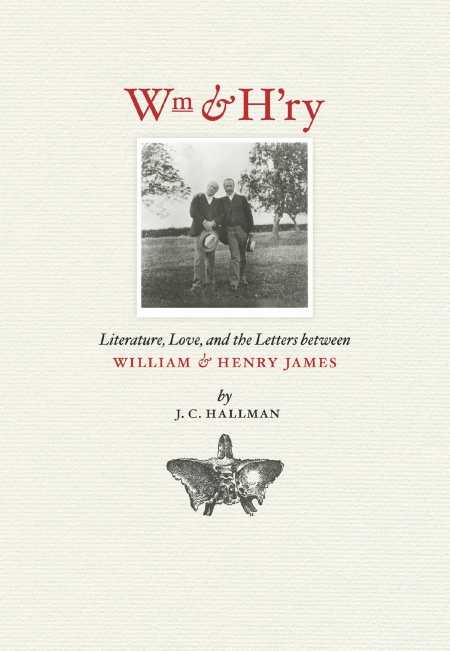Wm & H'ry
Literature, Love, and the Letters between William and Henry James
Brothers William and Henry James are rightfully famous within their respective fields of philosophy/psychology and literature. But their influence on each other is seldom discussed, a failure remedied in J. C. Hallman’s Wm & H’ry, an outstanding overview of the voluminous correspondence between the two siblings.
Over eight hundred letters between William and Henry James survive, and to its credit, Wm & H’ry gets to the heart of their substance in its 122 pages. Hallman allows us glimpses at the actual content of the letters when needed but avoids bogging down the reader with unnecessary cribbing.
The collection is illuminating, from the origins of the term “stream of consciousness” to Henry James’s feelings about other writers (Balzac was a favorite). Even more interesting are discussions of literary technique, as when Henry notes the failure of written descriptions to impart the true experience of place: “It is impossible to stand to-day in the high, loose, sunny, haunted square of Winchelsea without wondering what [Thackeray] could have been thinking of…. What could he—yes—have been thinking of?”
Those were Henry’s own words, but Hallman is equally adept at commenting on the letters himself, as when he notes one of the many divergences between the two brothers: “Wm had come to conclude that the ability to state clear reasons for one’s thinking was the mark of genius; H’ry had grown only firmer in his belief that we need never attempt anything other than the slicing open of our veins to let the impressions flow.”
Indeed, William, the author of Pragmatism, clearly had a different artistic sensibility than his brother, despite (or perhaps, because of) William’s beginnings as a painter. The intellectual rivalry of William and Henry is clear in these pages, as when we see William’s attempts to prod Henry in the direction of his own literary tastes. But brotherly compassion is present too, as William gently inquires about Henry’s failing efforts as a playwright. The brothers share their thoughts on many topics, including their physical ailments.
While it might have slowed the book a bit, standard numbered footnotes would have made finding the sources of quotations a bit easier. But it’s hard to quibble with Hallman’s chosen format: listing sources in the notes section and using the first few words of each quote as a marker. This method sacrifices expediency for intimacy, but in a book revealing the contents of once-private letters, perhaps erring on the side of intimacy is the right call.
As Hallman notes, most readers will arrive more aware of one brother’s work, whether William or Henry. Wm & H’ry does a great service in showing that these two extraordinary minds influenced each other at least as much as they influenced the students of their work.
Reviewed by
Peter Dabbene
Disclosure: This article is not an endorsement, but a review. The publisher of this book provided free copies of the book to have their book reviewed by a professional reviewer. No fee was paid by the publisher for this review. Foreword Reviews only recommends books that we love. Foreword Magazine, Inc. is disclosing this in accordance with the Federal Trade Commission’s 16 CFR, Part 255.

